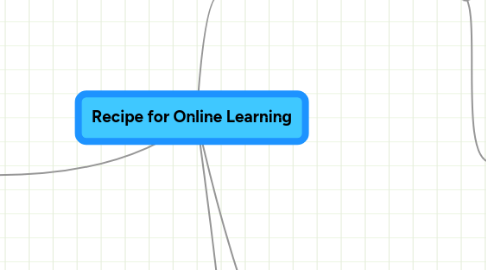
1. Characteristics of the Online Learner
1.1. Self-Directed
1.2. High locus of control
1.3. Need for affiliation
1.4. Fluent in Learning Technologies
1.5. Strong Academic Self Concept
1.6. Strong need for collaborative learning
2. Characteristics of the Online Instructor
2.1. Skill in the use of basic technologies
2.2. Can handle students with little distance learning experience
2.3. A basic skill and appreciation of collaborative learning competencies and appreciation for collaborative learning principles
2.4. Self-directed learning skills and deployment of cognitive learning strategies
2.5. Adaptive teaching styles with a diverse audience
2.6. Skilled Facilitator and content provider
2.7. Interpersonal Skills
2.8. Needs Assessment Skills
2.9. Administrative Skills
2.10. Systems Perspective of Thinking
3. Pedagogical Models or Constructs
3.1. 9 1/2 Guidelines to Technology Transformation
3.1.1. Designing Experiences, Not Products
3.1.1.1. Engaging your students, not just having them complete the course
3.1.2. Trust
3.1.2.1. Building trust through the design of the course, the content, then the instructor.
3.1.3. Learners as Designers
3.1.3.1. Students are designing their own content.
3.1.4. Learners as Experts
3.1.4.1. Especially in higher / adult education, students come with a wealth of experience, and instructors need to tap into that
3.1.5. Collaboration / Discourse
3.1.5.1. Working together without boundaries.
3.1.6. Aesthetics
3.1.6.1. We want to see usability and beauty in our courses.
3.1.7. Self-narrative
3.1.7.1. When students sign off of the course, we want them to reference the material again.
3.1.8. TPACK
3.1.8.1. What we teach teachers - Pedagogical, Content, and Technology Knowledge - bringing these all together
3.1.9. Innovative Pedagogy
3.1.9.1. Being brave and doing new things
3.1.10. Design as a Learner
3.1.10.1. Teach how you would want to be taught!
3.2. Salmons Five-Step Model (Student View)
3.2.1. Access and Motivation
3.2.1.1. Getting connected to the course and accessing the materials
3.2.2. Online Socialization
3.2.2.1. Developing a sense of belonging and identity
3.2.2.2. Learning to use the system to communicate
3.2.3. Information Exchange
3.2.3.1. Exchanging ideas with others
3.2.3.2. Retrieving information
3.2.4. Knowledge Construction
3.2.4.1. Assert individual views and make new learning
3.2.4.2. Collaboration with Group Members
3.2.5. Development
3.2.5.1. Accept responsibility for Learning
3.2.5.2. Challenge the System
4. Learning Technologies
4.1. Asynchronous Best Practices
4.1.1. Provide frequent Feedback
4.1.2. Provide metacomments or weaving statements that summarize the discussion.
4.1.3. Use asyncronous tools such as issue-based forums or debatesand coment labeling for deeper discussion
4.1.4. Recruit other students for facilitator and mentoring roles each week.
4.1.5. Pair advanced students with less advanced ones.
4.2. Synchronous Communication Tools
4.2.1. Continuous guidance
4.2.2. Encourage clear communication and create shared understandings
4.2.3. Expect a decrease in teacher control
4.3. Learning Communities
4.3.1. Monitor and support continued interaction and participation.
4.3.2. Provide initial feedback on appropriate communiaction.
4.3.3. Incorporating a rubric to promote discussion standards.
4.3.4. Design your course with community in mind.
